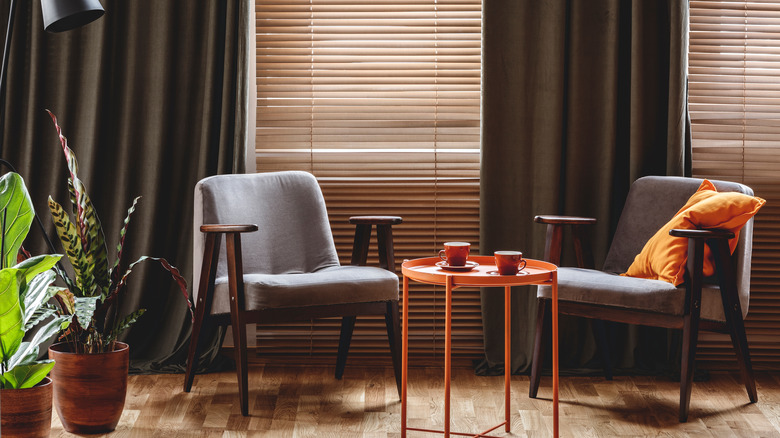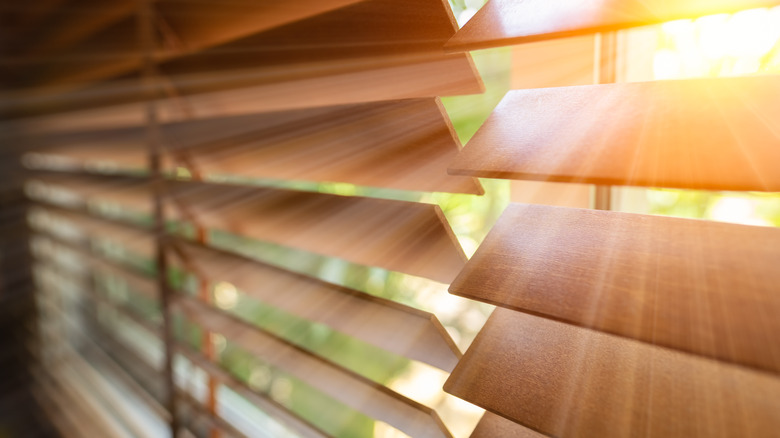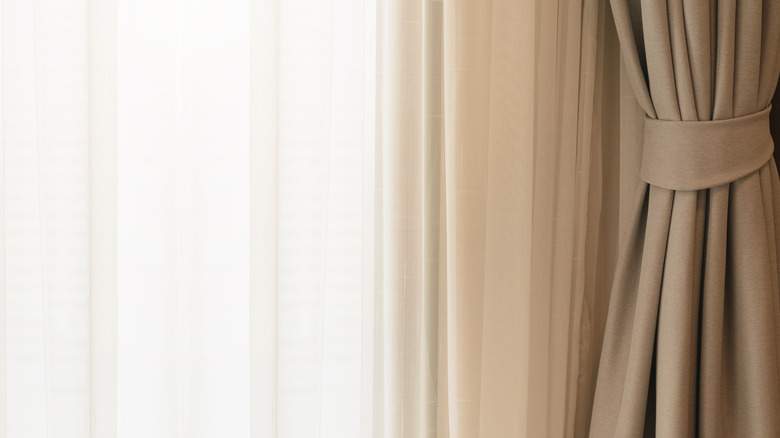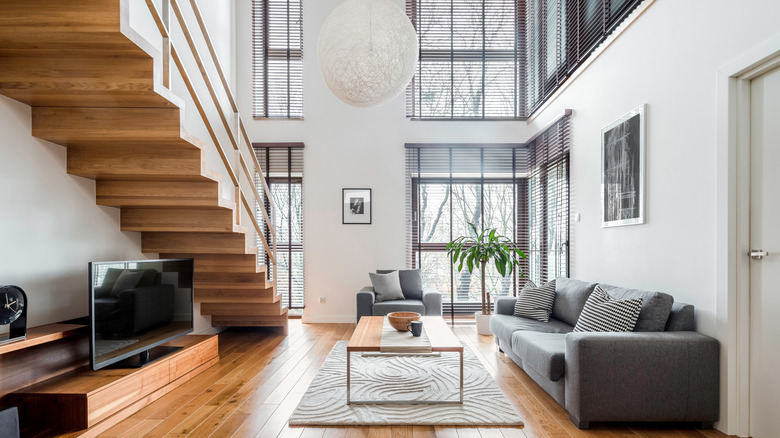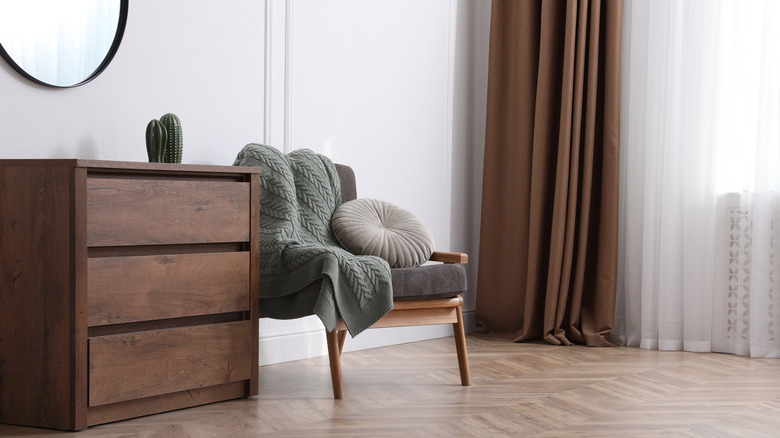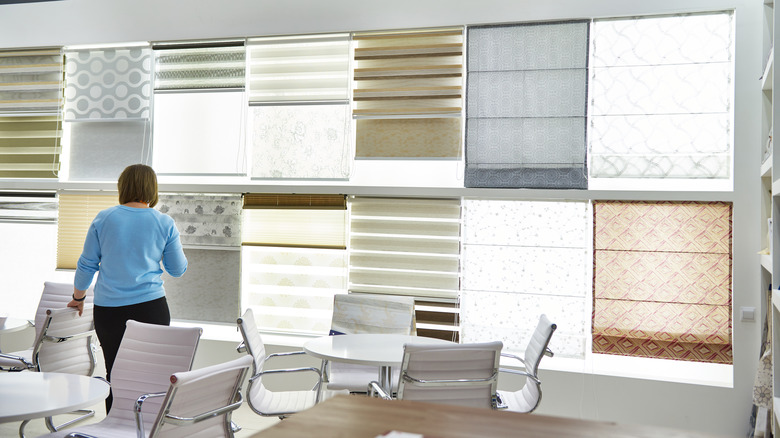Window Treatments: What To Know Before You Buy
Natural light is a key feature in any interior space. It serves a practical purpose and simultaneously impacts the room's visual atmosphere. Interior decorators control the amount of natural light that enters the room by using window treatments. Carolyn Forté, Home Appliances & Textiles Director at the Good Housekeeping Institute, says, "Windows are a great focal point in a room and blinds and shades should be both decorative and functional. Thankfully, we've come a long way from the days of hiding them behind basic mini blinds. Now you can dress up a room in hundreds of ways without making a major investment."
This article will explain the different types of window treatments available, explore how to choose window treatments for each space in your home, discern which size is best for each window size, and tell you how much you should expect to pay for window treatments for your space. We'll help you figure out the best curtains for you based on your style, budget, and window type.
Types of window treatments
According to House Beautiful, there are four primary types of window treatments: drapes, curtains, blinds, and shades. The right type for your space will depend on your budget, style, and practical needs.
-
Drapes hang from a rod, are made from fabric, and are typically floor-length. They tend to be crafted with heavy materials and may feature an additional fabric backing to provide additional structure and block out more light. They are best suited to formal spaces and have a traditional look. They're not a viable option if you have baseboard heaters in front of your windows because they would pose a fire hazard.
-
Curtains are similar to drapes in that they hang from a rod, but are fabricated from lighter and thinner material. Curtains can be opaque or sheer, allowing for different levels of light filtration. They need not reach the floor, so they're a good option for those with baseboard heaters. Both curtains and drapes are typically sold in pairs (via The Spruce).
-
Shades are made from fabric like drapes or curtains but are opened and closed vertically rather than horizontally. They attach to a rod or frame and are lifted using a cord or pulley system. It's also possible to find electronically-powered shades that can be opened and closed via remote. One downside of shades is that they must be customized to fit the specific window frame.
-
Blinds open vertically, like shades, but rather than being made of fabric are made from firmer materials like wood, bamboo, and plastic. They are formed into slats that can be tilted to let in a marginal amount of light or lifted completely to let more light in. Like shades, blinds are typically custom fit for your windows. Shutters are similar to blinds but are opened horizontally.
Sheer vs. opaque
Once you've chosen which type of window treatment you'd like to install, the next step is to decide on the level of opacity you need. Curtains and shades range from sheer to opaque, offering different levels of light filtration and privacy to serve different purposes.
Sheer curtains only filter a small amount of light, providing some privacy without darkening a room. As designer LeeAnn Baker told House Beautiful, "When our goal is to filter light on windows that are getting a lot of bright light, sheers are the perfect way for us to go." She adds, that "we also love to use them in other rooms — like for bathrooms or bedrooms, and for a different reason — when you still want light but also would like a bit more privacy." Some people opt to layer sheer curtains with heavier drapes, providing two options depending on the time of day and mood they're trying to set.
Blackout drapes are made with heavy, opaque fabric and feature a lining that blocks out almost all outdoor light, whether it's natural sunlight or the glow of street lamps. According to Wirecutter, most people would benefit from having blackout drapes in their bedrooms, though they're practically essential for people with irregular sleeping schedules. Some blackout curtains even offer soundproofing properties or thermal insulation to keep your room toasty warm in the colder months of the year (via Bob Vila).
Window treatment aesthetics
After weighing the practical considerations, you can move on to the fun stuff: picking a style. There are many different aesthetic options available depending on whether you choose curtains, blinds, or shades. Vice president of sales for the Shade Store Adam Skalman told The Washington Post that you can mix and match window treatments in the same space, but insists that, "there should be some consistency, whether it's in color or fabric."
When it comes to curtains, the possibilities are endless in terms of color and pattern options. Choose an option that either blends in with the room's color palette or contrasts for a visually interesting juxtaposition.
One of the most stylish picks that are often on-trend are wooden blinds. While these may be one of the pricier options on the market, they add value to a home and have a timeless look that won't soon look dated. They can be either stained, painted, or left in their natural state, providing a variety of options in terms of color (via Good Housekeeping). Blinds with wide slats create the illusion of larger windows and make the space feel bigger, while blinds with narrow slats have the opposite effect.
Choosing the right length
Once you've decided which type of window treatment you'd like to use, it's important to take measurements of your windows to ensure the right fit. Since floors, ceilings, and window frames may not be perfectly level, it's best to take several measurements on each length to ensure accuracy. If you're going to be choosing shades or blinds, measure the interior frame of the window to establish the size you need.
In order to simultaneously create the appearance of larger windows and block out the most amount of light, Kati Curtis of Kati Curtis Design recommends ensuring that your curtains are both wider and longer than the windows themselves. "Typically, 10 is your magic number, with 10 inches above the trim and 10 inches wider than your window on each side being the best fit," she explained to Martha Stewart. "If you don't have that much width, cut it in half and do 4 or 5 inches instead." Those who are fortunate enough to have high ceilings can follow a different set of rules, according to Curtis. "Your curtain rod or hardware should either be at the ceiling, just below your crown molding, or 12 to 24 inches above the window trim," she continued.
While shades and blinds are sized to perfectly fit inside a window frame, curtains and drapes can come in many different lengths. The three most common lengths found on the market are 84 inches, 96 inches, and 108 inches. Unless you have a heater in the way, curtains look best when they "graze the floor," according to Curtis. "Generally, you want to stay away from the 84-inch standard curtains unless you have very low ceilings," she added. "They don't look right in most scenarios and end up being an awkward length."
How much do window treatments cost?
The cost of window treatments varies widely depending on the type you choose. A pair of sheer curtains, for example, can cost under $20 while custom-fitted wooden blinds will be much pricier. According to Home Advisor, the average cost of window treatments for a house with eight windows is $762 based on data from 2,237 HomeAdvisor members. Additionally, they estimate that a set of curtains or drapes costs $370 if installed by a professional. This is based on each panel costing between $20 and $300, the rod costing between $10 and $350, and the labor going for $35 to $100 per hour. Custom-made curtains cost between $250 and $1,500 per panel. The cost of curtains themselves depends largely on the fabric. Cotton and polyester curtains are more affordable while silk and cashmere are much pricier.
When it comes to window shades, roman-style shades are the cheapest option at an average of $110 per window, while motorized shades are the priciest pick at $320 per window. The average cost to install electric shades in a house with eight windows is $2,570. Finally, blinds cost an average of $700, with traditional California shutters proving to be one of the most expensive options at $2,200.
